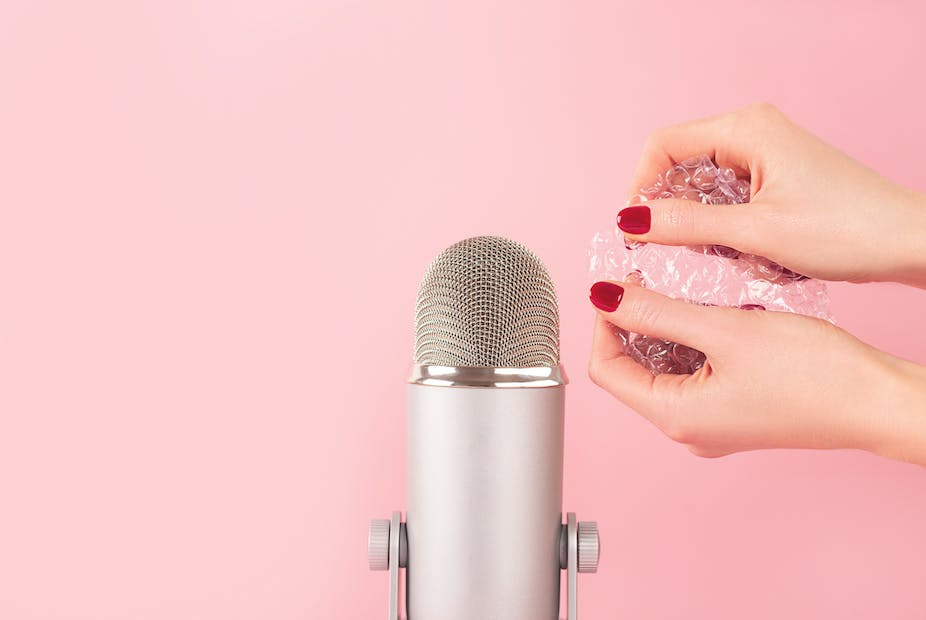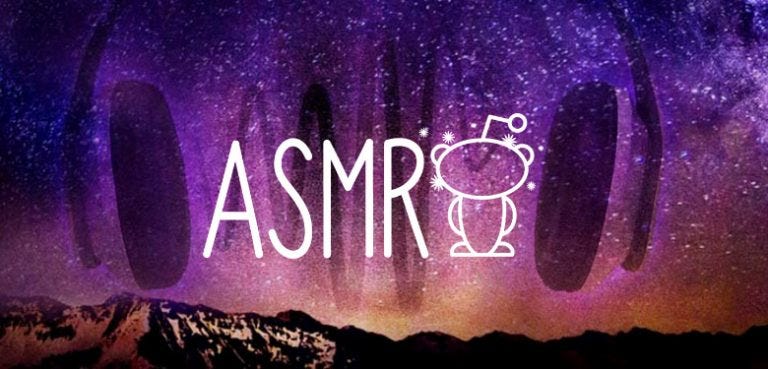ASMR: A Personal History (Part 1)
This is the first part of a three-part series about ASMR. Part 2 | Part 3
Introduction
ASMR, or Autonomous Sensory Meridian Response, is one of the more novel phenomena to emerge in the Internet era. For the uninitiated, ASMR is both a YouTube genre and a physical sensation. The genre of ASMR is characterized by close-up whispering and other soothing sounds in a meticulously crafted sensory environment. The sensation of ASMR is a euphoric “tingly” feeling thought to be present in an estimated 20% of the population. While ASMR videos are intended to produce the sensation of ASMR, many viewers just watch them for relaxation.
Even though the term “ASMR” was coined in 2010, it’s important to understand that the sensation of ASMR existed long before the Internet and does not require special videos to be experienced. As a child, I was intimately familiar with ASMR before I knew about a great many other things. I was just so curious about that strange warm feeling from music class, and I hoped for years that someone, someday would reveal its secrets. It was profoundly validating when an online community was able to do that for me, especially since the adults in my life had no idea what I was talking about.
ASMR has a special place in my heart due to establishing a connection between the Internet and myself at such an early age. It exposed me to so many parts of online culture, shaping me into the “digital citizen” that I am today. I considered it impactful enough for me to write my junior theme on it. But over a decade after watching my first ASMR video, I have yet to meet anyone whose journey resembles my own. This means that I have never had the chance to connect with someone about ASMR on the level that I’ve always wanted to. Thus, I write this post to give voice to my experience, hoping that there is a kindred spirit out there who might stumble upon it. But don’t worry— even if you aren’t that person, it should still be an interesting read!
We can roughly divide the history of ASMR1 into four eras:
The “Unnamed Feeling” Era (2008-2010)
The Golden Age (2011-2015)
ASMR Puberty (2016-2019)
Mainstream Acceptance (2020-Present)
This post will function as both an authoritative history and a personal recollection. Through this format, I hope to provide a complete picture of what it was like to be immersed in the ASMR community in the 2010s. Let’s begin!
The “Unnamed Feeling” Era
Kids are generally more attuned to their body than adults. They demand food when they feel hungry, scream when they feel upset, and generally wear their heart on their sleeve. To suppress all this would be unthinkable. But as we grow up, we learn to establish dominance over our physiological urges. This has many positive effects; after all, we could never have decorum if people acted on impulse all of the time. But it also means that we lose some level of intuitive awareness about how we feel.
I consider this important context for understanding my ASMR experience. ASMR was an important feeling, yes, but it wasn’t incomparable or magical. There were all sorts of feelings that felt equally novel to me, like that feeling when you feel like you’re falling out of a tree that comes at the edge of sleep. It was just another feeling. But if I were faced with a similar unnamed feeling nowadays, I would probably just think, “That’s kind of weird,” and then go back to whatever I was doing before. Sensations just don’t have the same hold on my thoughts that they used to.
Kids inhabit a world where everything is mysterious, and many things have no name. There is a lot more space for curiosity about things like ASMR, especially since kids aren’t being bombarded with stimuli in the same way. But adulthood comes with so many other things to think about. Not only that, but language starts playing a bigger role in how we think— our minds become so closely intertwined with the English language that our more intuitive thoughts are pushed out in favor of things that can be named and described.
This is partly why ASMR took so long to surface in the popular consciousness. Our vocabulary lacks nuance when it comes to physical sensations, especially novel ones that resist comparison. We are often limited to frustratingly non-descriptive language, like “that hurt” or “that felt good”. And it can be embarrassing to bring up something that intimate only for it to go unreciprocated. With an unusual sensation like ASMR, you have no way of knowing whether you’ll get an “oh yeah, that’s normal” reaction or a “what the heck, you’re a weirdo” reaction. Discussions of these aspects of our inner lives were only able to flourish after the Internet brought about new ways to connect with like-minded people without fear of judgment.
Since I am recounting my experience of ASMR as a child, I’d like to first describe it without the “ASMR vocabulary” I learned later. I mentioned above that I associated ASMR with music classes and similar settings. Demonstrations were especially ASMR-inducing— even moreso if they concerned something delicate or featured a soft-spoken presenter. ASMR was certainly tingly, but I thought of it as more of a tracing feeling. The feeling had a way of rippling across my scalp and down my spine.
Discussion of ASMR can be found as far back as 2008, but these conversations often didn’t seem to get anywhere. However, a basic understanding of the sensation began to take shape as more people shared their experiences. ASMR was euphoric: people often likened the pleasurability to that of an orgasm. ASMR was also relaxing2: people mentioned feeling deeply at peace during the sensation. And ASMR was intimate: nearly every experience of ASMR was accompanied by some sort of close-up or detail-oriented act.
In 2009, a YouTube channel “Whispering Life” released a short video called "Whisper 1 - hello!" in which the narrator muses, “I just really like the sound of whispering”. This triggered a cascade of similar “whispering channels” starting up across the Internet, which further fueled the growing proto-ASMR community. The most important hotspot was a forum thread on SteadyHealth called WEIRD SENSATION FEELS GOOD. Jennifer Allen, one of the contributors to the thread, went on to coin the term “ASMR” in 2010.
ASMR was far from the only name that people used to describe the sensation. Many of the early names referenced orgasms, like “head orgasm” or “braingasm”. However, the community decided that differentiation from sexual experiences was important: after all, there isn’t anything actually inherently sexual about ASMR. I really like the name coined by proto-ASMR website The Unnamed Feeling: AIOE, or Attention-Induced Observant Euphoria. This conveys so much information about the sensation: both its euphoric nature and its ties to “attentive stimuli”, like a haircut or fixing a watch. In contrast, “Autonomous Sensory Meridian Response” conveys almost no information— are any sensations not autonomous or sensory? Then again, “ay-ee-oh-ee” doesn’t quite have the same ring to it as “ay…ess…em…arr…”. The name stuck.
And with that, the ASMR community was born.
The Golden Age
In fifth grade, I had an especially impactful ASMR experience. During one particular social studies class, a Black3 girl in my class read a passage in our textbook about “opportunity cost”. Every time she said the phrase “opportunity cost”, I experienced tingles like I had never experienced tingles before. The sensation was so intense that it convinced me of the existence of ASMR— rather than just being all in my head, ASMR was a real sensation that was probably nameable and measurable. I resolved to figure out what this sensation was: someday, somehow.
I wouldn’t have to wait long. When I was in sixth grade, I was assigned a fateful typing lesson in which I had to copy a passage about lucid dreaming. The passage described lucid dreaming in a way that made it seem extremely learnable, which convinced me to scour the Internet for more details about its secrets. Lucid dreaming would become a major fascination for me over the next few years, but it also sent me down my first Internet rabbithole: one that went from lucid dreaming to relaxation techniques to self-hypnosis to regular hypnosis, and then finally to ASMR.
When I came across my first ASMR video, the description outlined ASMR in such specific terms that I knew it was exactly what I had been waiting before I had even pressed play. Getting confirmation in the form of tingles was one of the most magical experiences I have ever had on the Internet. I felt so much simultaneous excitement and inner peace— like I had come to the end of a long journey, but there was another journey waiting for me beyond the horizon.
The community had been completely transformed by the time I arrived on the scene. ASMR content had exploded across the Internet since Jennifer Allen’s christening, with people taking the concept in all sorts of different directions. It was refreshing to see such a grassroots movement develop— while many realms of the Internet had become professionalized by this point, ASMR was completely unexplored territory. It had no established practices, no experts, and an unclear audience. This gave ASMR a sort of raw, “early Internet” quality, even as late as 2012.
While a good chunk of ASMR content came from unintentional sources in the early days, every year “ASMRtists” were getting better and better at their craft. People began to gravitate towards a core set of effective stimuli, like haircuts, cranial nerve exams, and the painter Bob Ross. At least 14 ASMR channels were founded in 2009, but 2010 saw 38, 2011 saw 60, and 2012 saw 724. This first wave of channels formed the foundation of the YouTube genre that we see today.
Next week, I will analyze some of these ASMR pioneers: who they were, how they pushed the genre forward, and what made them great. Stay tuned!
Interestingly, I never thought of ASMR as something that induced relaxation. Sure, I was relaxed when I experienced it, but that felt more like a precondition than a result of the sensation. It was less the ASMR leading to the relaxation and more the relaxation leading to the ASMR.
I included this detail because ASMR is often thought of as the domain of (primarily White) women. There’s a misconception that certain demographics are better suited to produce the ASMR sensation— in the early days of ASMR, it was far more common to consume content from people with unique or unusual accents (as opposed to the 2023 scene, in which most top creators have more “mainstream” voices). And just on a personal level, most of the creators I have gravitated towards in recent years have been male. I would definitely encourage everyone to try broadening their ASMR diet in these respects!
https://asmruniversity.com/history-early-asmr-artists/




